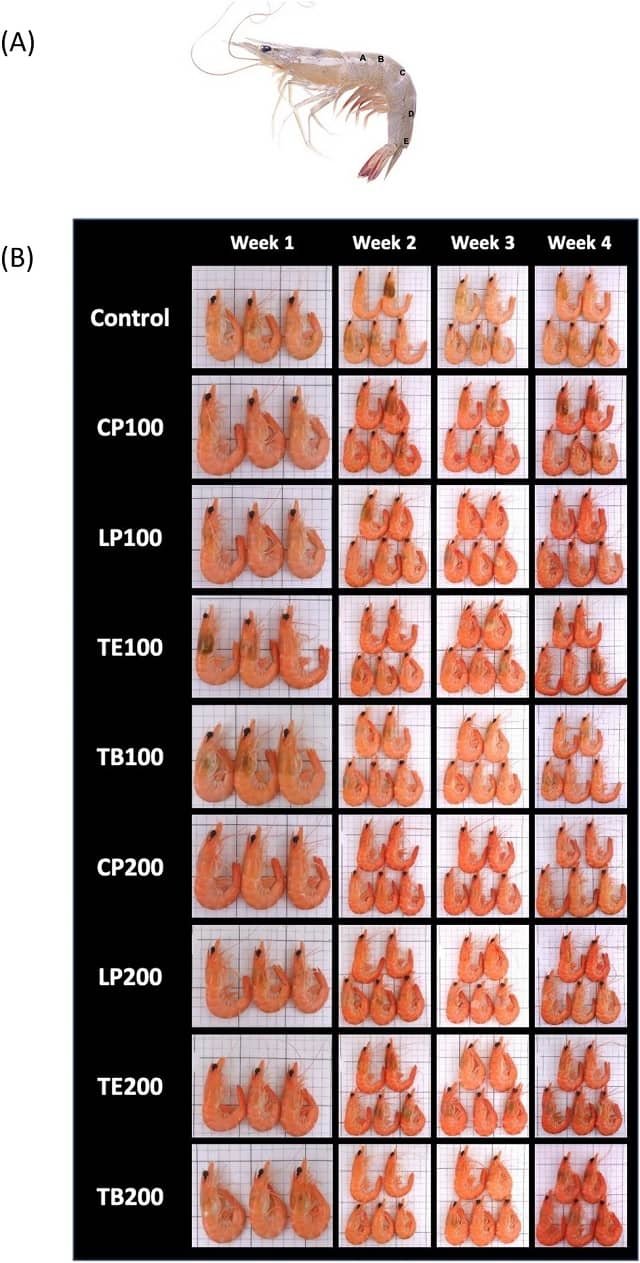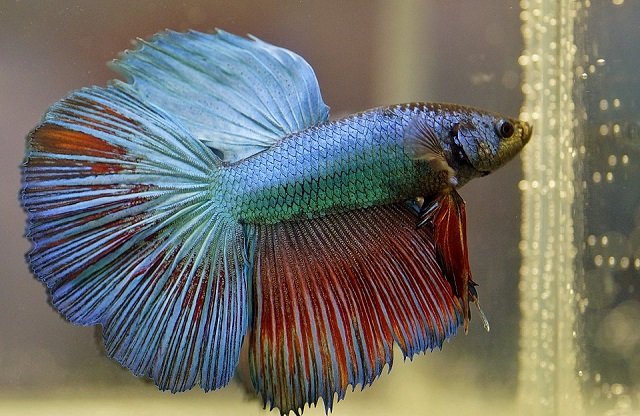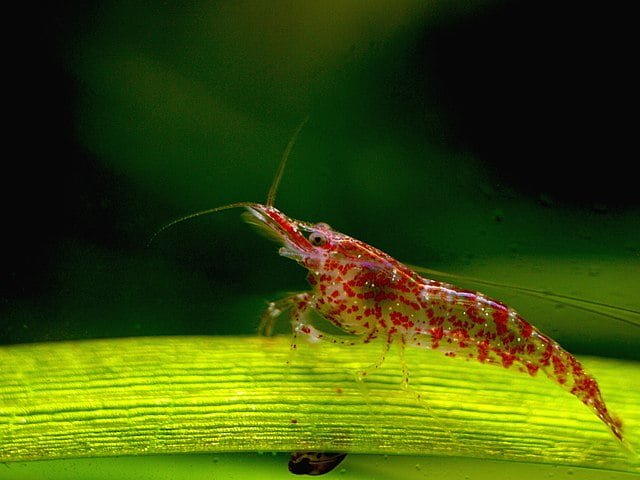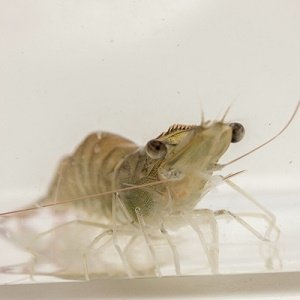
Carotenoids are essential in crustacean aquaculture. They are not only responsible for pigmentation but also act as antioxidants, enhance immune function, and define the sensory quality of the final product. The challenge is that shrimp, such as Penaeus vannamei, cannot synthesize these compounds themselves and must obtain them from their diet.
In intensive farming, access to natural pigments is limited, necessitating supplementation. Historically, astaxanthin has been the gold standard, but its high cost and supply volatility are known constraints.
This has generated growing interest in alternatives like beta-carotene (B-car) and canthaxanthin (Can). However, information on how these three carotenoids interact, or the optimal dosage in a mixture, has been fragmented—until now.
A recent study, published in Frontiers in Immunology by researchers from the Building of China-ASEAN Belt and Road Joint Laboratory on Mariculture Technology, the Centre for Research on Environmental Ecology and Fish Nutrition, Shanghai Ocean University, the Institute of Aquaculture at the University of Stirling, and the Ocean University of China, addressed this gap with a comprehensive evaluation and optimization analysis.
Key findings
- The combination of beta-carotene, canthaxanthin, and astaxanthin produced greater growth and a better FCR than any carotenoid used individually.
- Supplementing with beta-carotene led to greater deposition of total carotenoids and astaxanthin in tissues than supplementing with astaxanthin directly.
- All carotenoids improved antioxidant status and increased the “equivalent umami concentration” (flavor) in the shrimp muscle.
- The optimization analysis identified an ideal mixture of 368 mg/kg of beta-carotene, 204.5 mg/kg of canthaxanthin, and 219.2 mg/kg of astaxanthin for maximum biological performance.
- Although red pigmentation improved, it quickly plateaued because the shrimp deposit most carotenoids in the hepatopancreas, not the muscle.
How the study was conducted
Researchers conducted a 56-day study on P. vannamei using iso-nitrogenous and iso-lipidic diets to isolate the effects of the carotenoids. The study was divided into two phases:
Phase 1: Comparison (Benchmark): Five diets were tested: a control (no carotenoids) and four diets supplemented with literature-based doses: beta-carotene (350 mg/kg), astaxanthin (150 mg/kg), canthaxanthin (200 mg/kg), and a mixture of the three. Growth, FCR, digestive enzymes, antioxidant status, color, and flavor profile were evaluated.
Phase 2: Optimization (RSM): Using Response Surface Methodology (RSM), variable ranges of the three carotenoids were tested (B-car 200–500, Can 100–300, Ast 50–250 mg/kg). Subsequently, a multi-criteria decision-making analysis (AHP-CRITIC-TOPSIS) was used to model the interactions and identify the globally optimal “recipe.”
Comparison results: The mixture is superior
The results of the first phase were clear: carotenoid supplementation works, and the combination works better.
Stay Always Informed
Join our communities to instantly receive the most important news, reports, and analysis from the aquaculture industry.
Growth and feed efficiency (FCR)
All shrimp fed carotenoid-supplemented diets showed a significantly higher final weight, a higher specific growth rate (SGR), and a lower Feed Conversion Ratio (FCR) compared to the control group. However, the Mixture diet yielded the best performance, significantly surpassing all individual carotenoid groups in final weight and FCR.
Health: Antioxidants and digestive enzymes
Carotenoids are potent antioxidants. All supplemented diets improved the shrimp’s health status, elevating total antioxidant capacity (T-AOC) and reducing malondialdehyde (MDA), a marker of oxidative damage. Astaxanthin was the most efficient single additive for improving antioxidants. Nonetheless, the mixed diet provided additional gains, surpassing even astaxanthin alone in T-AOC. Furthermore, carotenoid supplementation also enhanced the activities of digestive enzymes (lipase, protease, and amylase).
Flavor and quality: The impact on Umami
A crucial and often-overlooked aspect of nutrition is its impact on sensory quality. The study analyzed the flavor components in the shrimp muscle. Shrimp fed carotenoids showed significantly higher levels of free amino acids (like glutamate), nucleotides (IMP, GMP), and succinic acid—all key components of umami flavor. This resulted in a significantly higher “equivalent umami concentration” (EUC). The mixed diet, once again, produced the highest levels of EUC, indicating improved flavor.
The surprising finding about Beta-carotene
The analysis of shrimp tissues revealed two fascinating findings about pigment deposition.
First, as expected, astaxanthin was the predominant pigment in the tissues (over 80%), and the hepatopancreas was the main storage site (containing levels 10–100 times higher than the muscle).
Second, and more surprisingly, the beta-carotene diet (350 mg/kg) produced significantly higher levels of total astaxanthin and total carotenoids in the hepatopancreas than the astaxanthin diet (150 mg/kg).
This confirms not only that P. vannamei can bioconvert beta-carotene into astaxanthin, but that this precursor can be a highly effective pathway for pigment accumulation.
What about red color (Pigmentation)?
While carotenoids improved color (lower L* values and higher a* -red- values) compared to the control, there was a plateau effect.
Despite the mixed diet resulting in the highest total carotenoid accumulation in the body, it did not produce a significantly redder color in cooked shrimp compared to the individual carotenoids.
The study’s explanation is that this discrepancy is due to pigment distribution. Since P. vannamei stores the vast majority of carotenoids in the hepatopancreas rather than the muscle, the additional pigment increases in the Mixture diet did not translate into a redder visual appearance.
The optimal formula: The precise recipe for success
The second phase of the study used advanced mathematical models (RSM) to answer the key question: What is the exact ratio of these three carotenoids that maximizes performance?
The AHP-CRITIC-TOPSIS analysis integrated the results for total carotenoid deposition (T-CAR), total astaxanthin deposition (T-AST), and total antioxidant capacity (T-AOC).
The result was an optimized formula, identified as the best composite solution:
- Beta-carotene: 368.0 mg/kg
- Canthaxanthin: 204.5 mg/kg
- Astaxanthin: 219.2 mg/kg
This specific mixture (with a TOPSIS score of 0.993) represents the optimal balance for maximizing biological and health benefits within the tested ranges.
Conclusion and implications for producers
This study provides rigorous guidance for moving beyond simple astaxanthin supplementation. It demonstrates that carotenoid mixtures are biologically superior to individual compounds, enhancing growth, feed efficiency, antioxidant status, and flavor quality simultaneously.
Furthermore, it highlights the crucial role of beta-carotene as a highly effective precursor for astaxanthin deposition.
While the study identifies a biologically optimal “recipe,” the authors note a significant limitation: the optimization did not impose a cost constraint. The next step for the industry will be to use these models to find minimum effective dose combinations that balance biological performance with economic viability.
Reference (open access)
Xue, Y., Han, B., Xue, Y., Yi, G., Wu, M., Moss, A. S., Huang, X., & Wang, W. (2025). Comprehensive evaluation of individual and combined dietary carotenoids in Penaeus vannamei and response surface analysis for optimizing combinations. Frontiers in Immunology, 16, 1688761. https://doi.org/10.3389/fimmu.2025.1688761
Editor at the digital magazine AquaHoy. He holds a degree in Aquaculture Biology from the National University of Santa (UNS) and a Master’s degree in Science and Innovation Management from the Polytechnic University of Valencia, with postgraduate diplomas in Business Innovation and Innovation Management. He possesses extensive experience in the aquaculture and fisheries sector, having led the Fisheries Innovation Unit of the National Program for Innovation in Fisheries and Aquaculture (PNIPA). He has served as a senior consultant in technology watch, an innovation project formulator and advisor, and a lecturer at UNS. He is a member of the Peruvian College of Biologists and was recognized by the World Aquaculture Society (WAS) in 2016 for his contribution to aquaculture.




